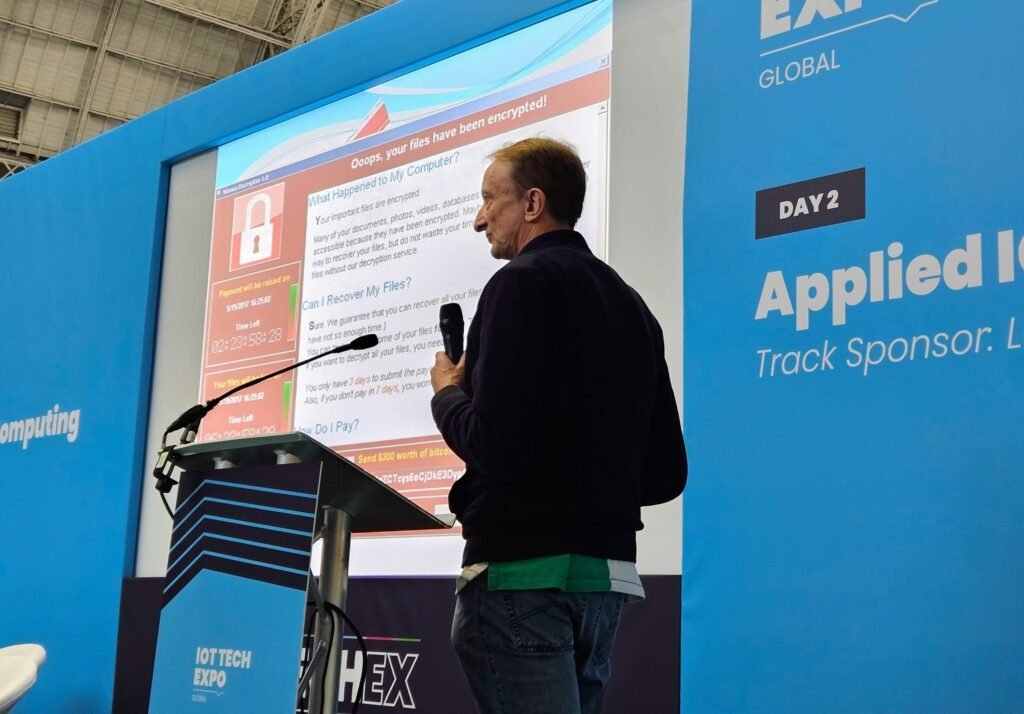Patrick Maw, an knowledgeable in medical machine cybersecurity at University College London Hospitals NHS Foundation Trust, not too long ago gave a chat at IoT Tech Expo Global highlighting the cybersecurity threats dealing with linked medical gadgets.
Maw defined that a variety of medical tools now connects to healthcare networks, from infusion pumps and CT scanners to cellular gadgets operating medical apps.
“Software program is a medical machine in its personal proper,” said Maw, drawing consideration to the increasing realm of medical know-how.
Whereas linked gadgets allow extra complete digital well being information and improved affected person care, it additionally exposes vulnerabilities.
Maw warns that many gadgets run on outdated working techniques like Home windows 7 that now not obtain safety updates. Others can’t assist antivirus software program or patches with out impacting performance or regulatory compliance.
Such extremely weak gadgets depart clear openings for cyberattacks. Maw cited real-world examples just like the 2017 WannaCry ransomware assault that severely disrupted NHS trusts. Over 140 recognized hacking teams might pose related threats.
“We had been getting patches for the Home windows-based medical gadgets six months after WannaCry hit,” says Maw. “I’m hoping that suppliers will do higher now, however there’s usually fairly a delay.”
In response to Maw, the commonest assault vectors embody phishing emails, malware infections, and focusing on third-party software program distributors to compromise provide chains.
To steadiness medical connectivity and safety, Maw advises that healthcare organisations take measures like putting in firewalls, community intrusion techniques, and community segmentation to create protected zones for important gadgets. Legacy techniques too outdated to harden might have isolation.
Delving into the regulatory panorama, Maw offered a succinct overview of the Medical Device Directives of 1993, emphasising the standards that outline a medical machine. He highlighted the 2017 updates, mentioning the evolving nature of laws and the necessity for adherence to efficiency and security requirements.
Classification — based mostly on threat — categorises medical gadgets into courses 1, 2A, 2B, and better, relying on their potential impression.
“The important thing factor to recollect is all these are regulated medical gadgets and you can not change them with out having to be recertified,” explains Maw.
Maw addressed the important query of why medical gadgets are networked within the first place. He defined that the combination is pushed by the need for a complete affected person document, aiming to switch cumbersome guide information with environment friendly digital techniques.
The shift in the direction of unified techniques — exemplified by UCLH’s implementation of EpicCare — streamlines affected person info, reduces the chance of errors, and ensures a extra correct and accessible medical historical past.
Maw warns the sector can’t revert to paper information, so cybersecurity have to be an ongoing funding. As connectivity expands, so too should cyber protections round medical techniques and affected person well being knowledge.
See additionally: IoT Tech Expo: How emerging technologies are modernising financial institutions
Wish to be taught concerning the IoT from trade leaders? Take a look at IoT Tech Expo going down in Amsterdam, California, and London. The excellent occasion is co-located with Cyber Security & Cloud Expo and Digital Transformation Week.
Discover different upcoming enterprise know-how occasions and webinars powered by TechForge here.

